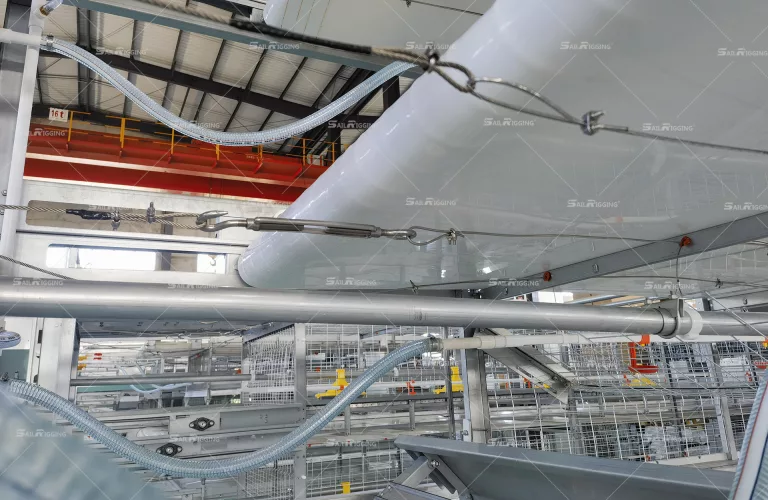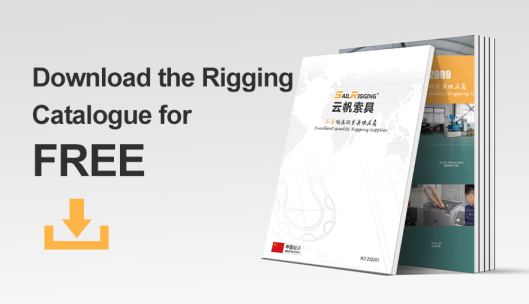When transporting goods across oceans, proper securing of containers is crucial for maintaining ship stability and ensuring the safety of the cargo. As a ship travels through turbulent waters, the risk of containers shifting or tipping over increases dramatically. In these situation, turnbuckles play a key role in keeping the containers safely secured during the journey.
Importance of Container Lashing on Ships
- Preventing Cargo Shifts: As a ship moves through rough seas, the forces from waves, wind, and vessel motion can cause containers to shift. Any movement of containers can endanger the ship’s stability, leading to accidents or loss of cargo. Properly tensioned lashing systems, including turnbuckles, help prevent any shifting or toppling of containers.
- Compliance with Safety Regulations: There are strict international maritime safety regulations governing container lashing. The International Maritime Organization (IMO) and the International Convention for Safe Containers (CSC) have established guidelines that ensure containers are properly lashed to prevent accidents during transport. Turnbuckles help achieve the correct tension in these lashing systems, contributing to compliance with these safety standards.
Turnbuckles in the Container Lashing System
The container lashing system on a ship consists of various components, including lashing rods, twistlocks, and turnbuckles. Turnbuckles are crucial for adjusting and maintaining tension in the system. Here’s how they function:
- Tension Adjustment: Turnbuckles are used to adjust the tension in lashing rods or chains that secure containers to the ship’s deck or to other containers. By tightening or loosening the turnbuckle, operators can ensure that the lashing is neither too loose nor too tight, providing the optimal level of security for the containers.
- Compensating for Load Shifts: As the ship moves and containers experience different forces, the tension in the lashing system can change. Turnbuckles allow for quick adjustments to maintain consistent tension throughout the voyage, compensating for the dynamic forces acting on the containers.
- Securing Stacked Containers: When containers are stacked on top of one another, turnbuckles are used to secure the stacks in place. They connect lashing rods from the top of one container to the bottom of another, locking them together and preventing movement. Turnbuckles are particularly important for securing high stacks, where the risk of tipping is greater due to the height and weight distribution.
Types of Turnbuckles Used in Container Lashing on Ships
The specific type of turnbuckle used in container lashing depends on the load capacity and environmental conditions. Here are some common types:
- Jaw and Jaw Turnbuckles: These turnbuckles feature two jaw ends, which can easily connect to lashing rods or eye bolts on the container or ship’s deck. The jaw ends are secured with pins, providing a strong and stable connection. Jaw and jaw turnbuckles are ideal for heavy-duty applications where high tensile loads are expected.
- Hook and Hook Turnbuckles: For lighter loads or where quick adjustment is needed, hook and hook turnbuckles can be used. They are easy to install and remove, but are less secure than jaw-type turnbuckles, making them suitable for less critical applications or where adjustments need to be made frequently.
- Eye and Eye Turnbuckles: These turnbuckles feature closed loops (eyes) on either end and are commonly used in situations where a permanent or semi-permanent connection is required. They provide a secure connection point for lashing rods and are resistant to accidental disengagement.
Key Advantages of Turnbuckles in Container Lashing
Turnbuckles offer several advantages in container lashing on ships:
- Precise Tension Control: Turnbuckles allow for precise control over the tension in lashing systems, which is critical for securing containers in varying weather conditions. By easily adjusting the tension, operators can ensure the containers are tightly secured, reducing the risk of movement during transit.
- Durability in Harsh Conditions: Turnbuckles used in maritime applications are typically made from corrosion-resistant materials such as galvanized steel or stainless steel. This durability ensures that the turnbuckles maintain their strength even after prolonged exposure to seawater, salt, and changing weather conditions.
- Versatility: Turnbuckles can be used in various configurations and sizes, allowing them to adapt to different container loads and stacking arrangements. Whether securing single containers or multi-container stacks, turnbuckles offer the flexibility to meet specific lashing needs.
- Safety and Compliance: Turnbuckles are essential components in ensuring that container lashing meets international safety standards. Their role in maintaining tension and stability helps ships comply with regulations like the IMO’s Code of Safe Practice for Cargo Stowage and Securing, which outlines guidelines for securing cargo on ships.
Proper Installation and Maintenance of Turnbuckles in Container Lashing
For turnbuckles to function effectively in container lashing systems, they must be properly installed and maintained. Key considerations include:
- Correct Sizing: The size and load capacity of the turnbuckle must match the weight and tension requirements of the container and lashing system. Using undersized turnbuckles can lead to failure under heavy loads.
- Inspection for Wear and Tear: Turnbuckles should be regularly inspected for signs of wear, corrosion, or damage, especially in marine environments where saltwater can accelerate deterioration. Regular maintenance ensures that the turnbuckles remain in optimal condition for securing containers.
- Lubrication: To prevent rust and ensure smooth tension adjustments, turnbuckles should be lubricated periodically. This helps extend their lifespan and maintain their performance, especially in harsh maritime conditions.
- Proper Tensioning: Over-tightening or under-tightening the turnbuckles can compromise the integrity of the lashing system. It’s important to apply the correct amount of tension, ensuring the containers are secure but not at risk of damaging the lashing components.
In the end, turnbuckles are critical components in the lashing systems used to secure containers on ships. Their ability to adjust tension, resist harsh marine conditions, and maintain the stability of cargo makes them indispensable in ensuring safe transport. Whether it’s securing single containers or managing the stability of multi-container stacks, turnbuckles provide the precision and strength required to meet the rigorous demands of container lashing at sea. If you have any question about container lashing, please feel free to contact Sail Rigging.





